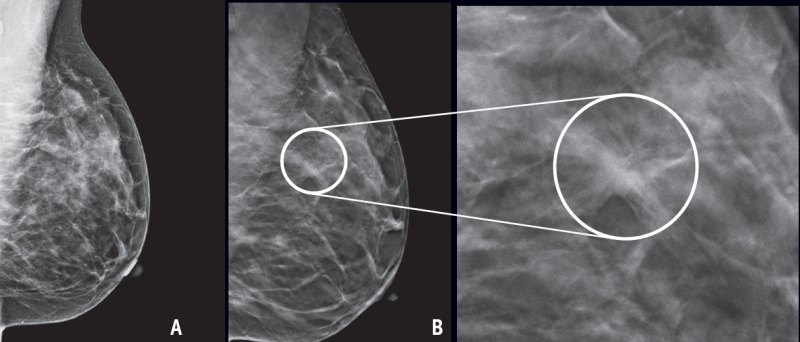
It might not seem especially surprising that an esteemed professor of radiology, who literally wrote the book on breast imaging (a weighty 1,488 pages), diagnosed her own breast cancer.
“I’ve known since I was in high school that I had a family history,” the University of Pittsburgh’s Wendie Berg, an MD/PhD, says. Berg was writing a chapter on risk models—methods that tally risk based on family history of breast and ovarian cancer, age, height, weight, and other factors.
Berg’s result came to a 19.7 percent lifetime risk—just under the 20 percent indicated for an MRI, in addition to standard mammography.

Though her mammogram and tomosynthesis (3D mammogram) a year earlier had been clear, Berg, like about 40 percent of all women, has dense breasts that can make detecting cancer more difficult. Knowing this, and having led trials investigating supplemental ultrasound and MRI for that population, she opted for an MRI.
“I wasn’t going to look at it,” she says of the scan. Of course she did, and she saw a .9 centimeter tumor that the 2D and 3D mammograms had missed.
All ended well for Berg (who got the all-clear after a procedure and a month of radiation). But she was struck by how lacking physician advice seemed to be when it comes to dense breasts: “My own well-educated, well-intentioned doctor wasn’t able to guide me. And, unfortunately, my experience is not unique,” she says.
So, Berg joined with patient advocate JoAnn Pushkin and technologist Cindy Henke-Sarmento to launch DenseBreast-info.org, an online tool to educate patients and doctors about the implications of dense tissue: what it means for cancer risk, imaging decisions, and even insurance coverage.

“There’s a huge gap in getting the message out about additional cancers which may be found by further screening and the potential for a false-positive which may result from supplemental screening,” says Berg. “Women have to weigh the stress and harm of extra testing against possible delayed detection of cancer.”
